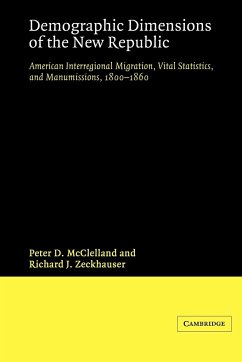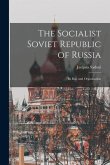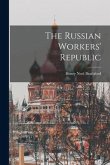A comprehensive analysis of American vital statistics and migration patterns up to the Civil War.
This book provides the first comprehensive and consistent analysis of vital statistics and migration patterns for the United States between the Revolution and the Civil War. It is anchored in the one available source for nationwide estimates, the decennial censuses. It attempts to provide, for black and white populations, a consistent set of estimates of birth and death rates, rates of natural increase, and net international and interregional flows. For the black population, it also estimates the changing pace of manumissions in the antebellum decades. The census estimates are also conditioned by a wide range of historical evidence, both quantitative and non-quantitative, ranging from evidence on slave smuggling to ship traffic during the War of 1812. The results are two-fold: a set of data and a set of questions suggested by the data that promise novel challenges for historians of the antebellum era.
Table of content:
List of tables; Preface; Map 1: regions of the United States; 1. Introduction and summary; 2. Migration model: closed population; 3. Migration model: adjustments for international migration; 4. Interregional migration estimates 1800-60; 5. White population: birth rates, death rates, and rates of natural increase; 6. Negro population: birth rates, death rates, rates of natural increase, and manumissions; 7. Conclusions; Appendixes; Notes; Bibliography; Index.
Hinweis: Dieser Artikel kann nur an eine deutsche Lieferadresse ausgeliefert werden.
This book provides the first comprehensive and consistent analysis of vital statistics and migration patterns for the United States between the Revolution and the Civil War. It is anchored in the one available source for nationwide estimates, the decennial censuses. It attempts to provide, for black and white populations, a consistent set of estimates of birth and death rates, rates of natural increase, and net international and interregional flows. For the black population, it also estimates the changing pace of manumissions in the antebellum decades. The census estimates are also conditioned by a wide range of historical evidence, both quantitative and non-quantitative, ranging from evidence on slave smuggling to ship traffic during the War of 1812. The results are two-fold: a set of data and a set of questions suggested by the data that promise novel challenges for historians of the antebellum era.
Table of content:
List of tables; Preface; Map 1: regions of the United States; 1. Introduction and summary; 2. Migration model: closed population; 3. Migration model: adjustments for international migration; 4. Interregional migration estimates 1800-60; 5. White population: birth rates, death rates, and rates of natural increase; 6. Negro population: birth rates, death rates, rates of natural increase, and manumissions; 7. Conclusions; Appendixes; Notes; Bibliography; Index.
Hinweis: Dieser Artikel kann nur an eine deutsche Lieferadresse ausgeliefert werden.








